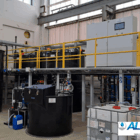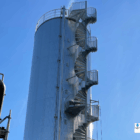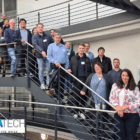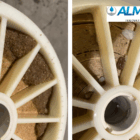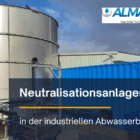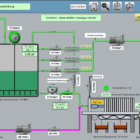Membrane technology has become one of the key technologies in industrial water and wastewater treatment. Membranes act as selective barriers that separate substances based on their size, charge or chemical properties. Their versatility and efficiency make them indispensable in areas such as water recycling, desalination, process water treatment and wastewater treatment.
This article deals in detail with the technical background, types of membranes, their applications and the challenges and solutions in practice.
Table of contents
What is a membrane?
A membrane is a thin, semi-permeable layer that selectively allows certain substances to pass through while retaining others. The separation performance depends on the pore size, the membrane structure and the chemical composition. Membranes are divided into the following categories based on the separation mechanism:
Sieving effect: Separation based on particle size.
Diffusion: Separation by concentration gradients.
Charge selection: Dependent on the electrical charge of the molecules.
Types of membranes and their properties
1. microfiltration (MF)
Pore size: 0.1 to 10 µm.
Application: Removal of suspended matter, bacteria and coarse particles.
Typical applications: Pre-treatment for reverse osmosis (RO), wastewater treatment.
2. ultrafiltration (UF)
Pore size: 0.01 to 0.1 µm.
Field of application: Separation of viruses, proteins and colloids.
Typical applications: Drinking water treatment, reduction of turbidity and organic substances.
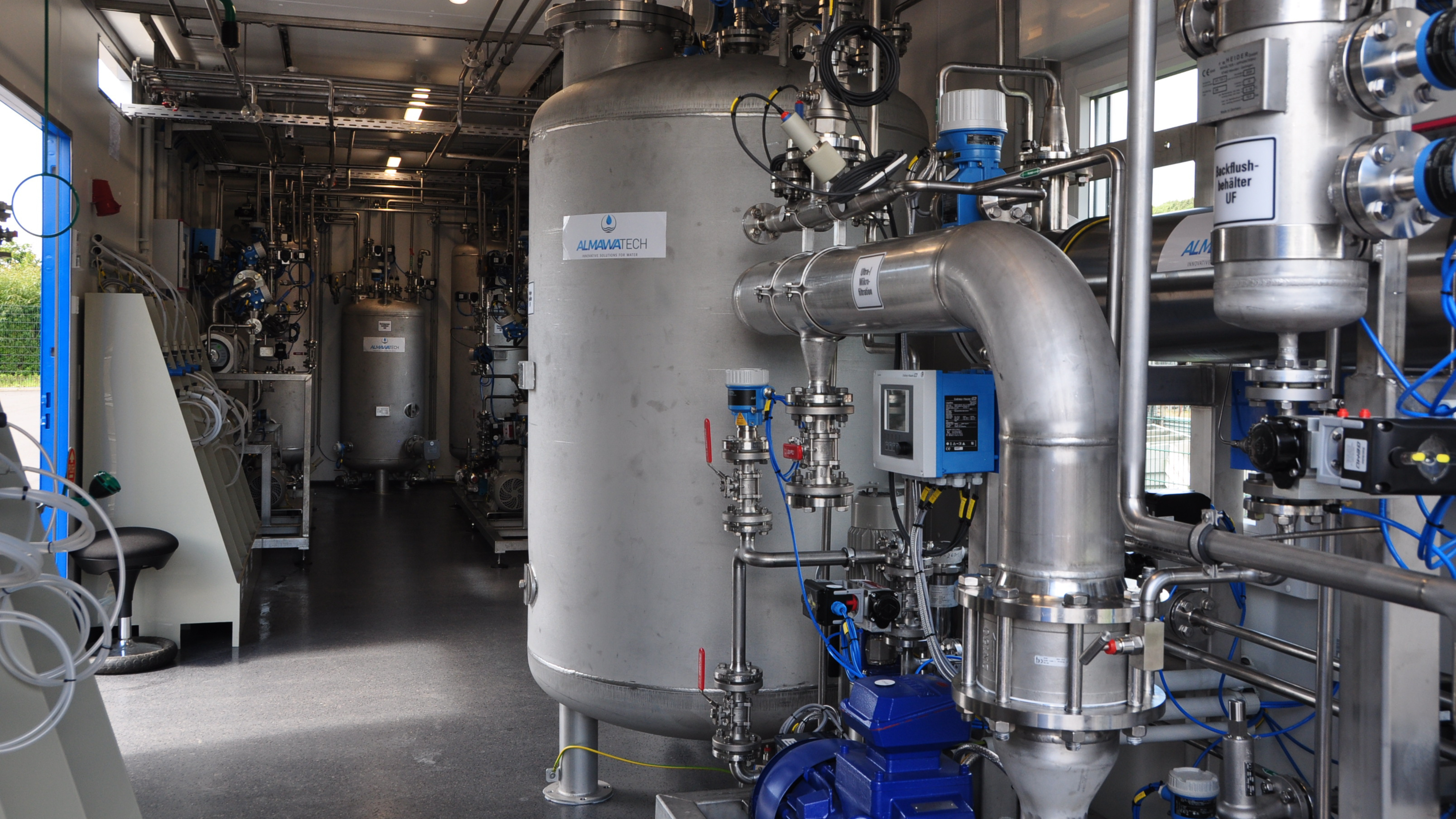
Photo: One of our ALMA MEM UF ultrafiltration systems, installed in the ALMA Modul technical room container
3. nanofiltration (NF)
Pore size: 1 to 10 nm.
Application: Retention of divalent ions and organic molecules.
Typical applications: Water softening, removal of pesticides and drug residues.
4. reverse osmosis (RO)
Porengröße: <1 nm.
Application: Separation of almost all dissolved substances, including salts and organic compounds.
Typical applications: Seawater desalination, production of ultrapure water.
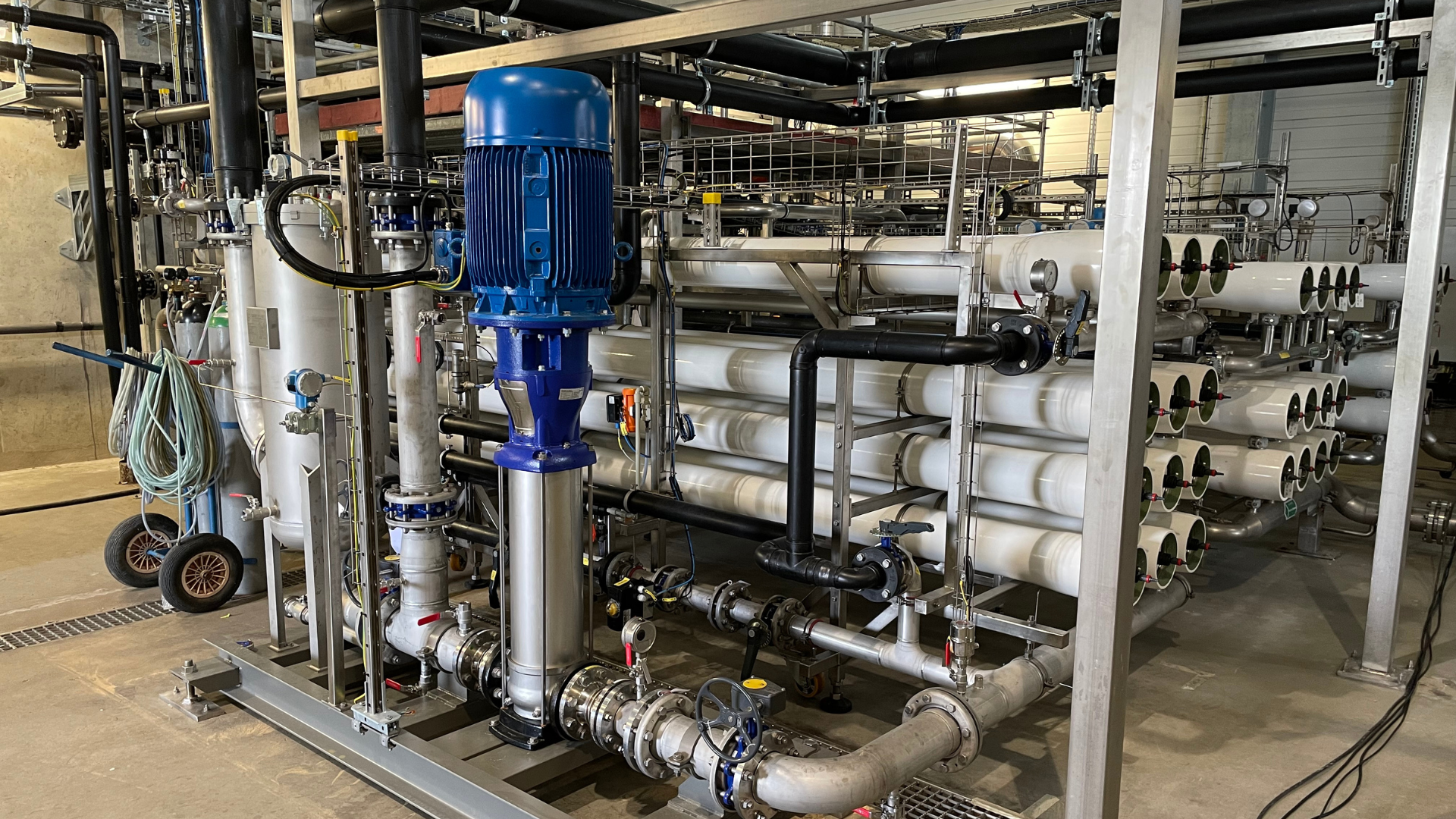
Photo: Our reverse osmosis system for treating wastewater for internal reuse (Water-ReUse)
5. gas permeation membranes
Area of application: Separation of gas mixtures such as oxygen and nitrogen.
Typical applications: Process gas cleaning in the chemical industry.
Applications of membranes in practice
1. drinking water treatment
Membranes such as ultrafiltration and reverse osmosis are used to remove impurities such as suspended solids, microorganisms, heavy metals and dissolved salts. They are particularly advantageous in the treatment of surface or brackish water.
2. wastewater treatment
Membranes play a crucial role in the treatment of industrial and municipal wastewater. Membrane bioreactors (MBR) combine biological degradation processes with membrane filtration to meet the highest purification standards.
3. water recycling
Membrane systems enable the reuse of wastewater by removing pollutants and recovering valuable materials. This is particularly important in water-intensive industries such as food processing or metalworking.
4. process water treatment
In industry, membranes are used to provide process water with specific quality requirements. Examples include the removal of silicic acid in the semiconductor industry or the softening of water in power plants.
5. seawater desalination
Reverse osmosis is the preferred method for obtaining drinking water from seawater. Its high efficiency and flexibility make it the first choice for regions with water shortages.
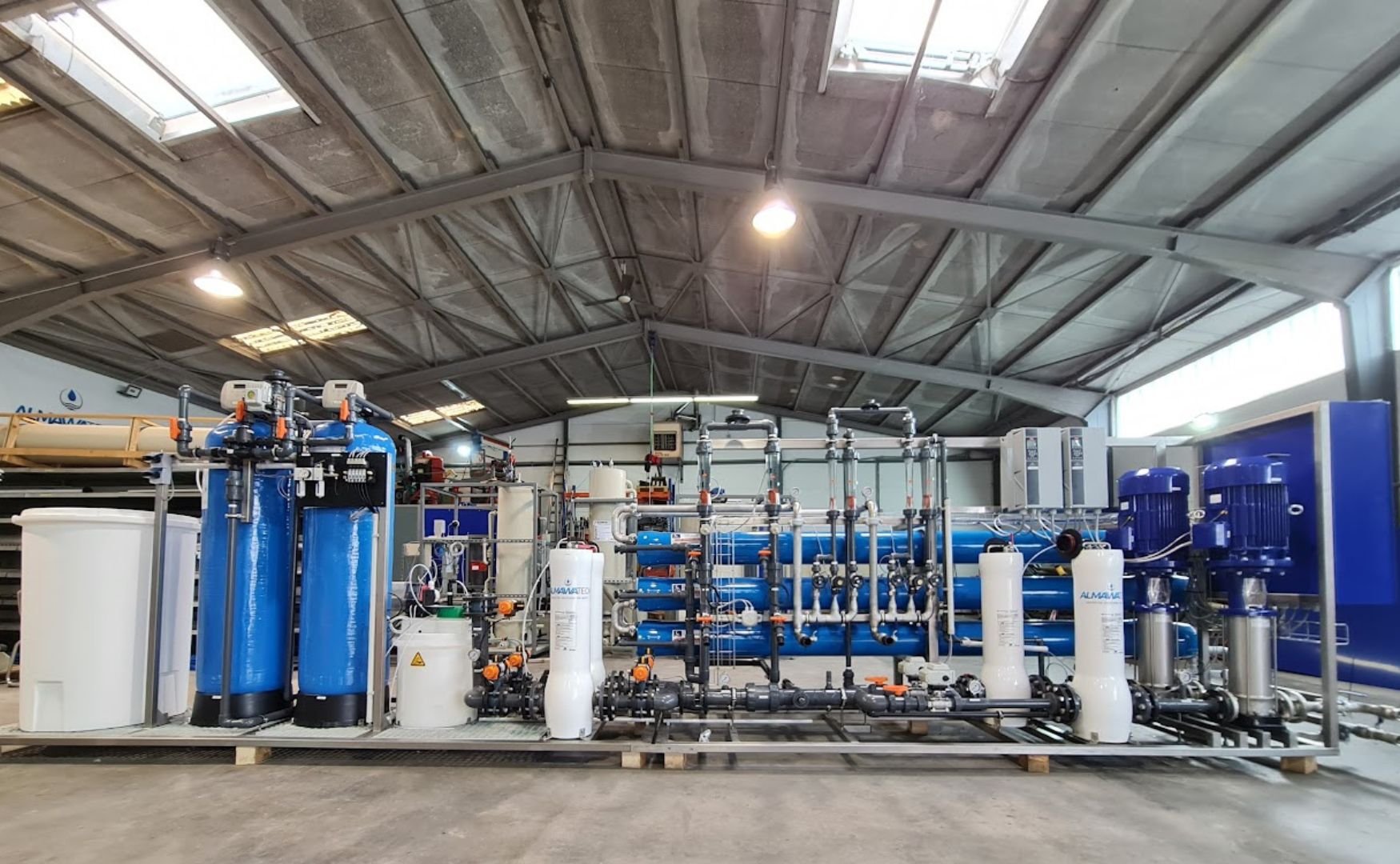
Photo: Our reverse osmosis system for the production of demineralized water, incl. softening system
Challenges and solutions when using membranes
1. fouling and scaling
Problem: Deposits of particles, organic substances or salts on the membrane surface.
Solution: Use of pre-treatment methods such as coagulation, biofiltration or ultrafiltration as well as the dosing of antiscalants.
2. biofouling
Problem: Growth of microorganisms on the membrane, which leads to a loss of performance.
Solution: Regular chemical cleaning (CIP), use of biocides and control of the nutrient supply.
3. pressure loss and mechanical load
Problem: High pressures can damage diaphragms.
Solution: Optimization of operating parameters and regular maintenance.
Diaphragm materials and designs
1. materials
Polyethersulfone (PES): High chemical and thermal resistance.
Polyvinylidene fluoride (PVDF): Particularly robust against mechanical loads.
Cellulose acetate: Inexpensive, but susceptible to biological attack.
Ceramic diaphragms: Highest chemical and thermal stability, ideal for abrasive media.
2. designs
Hollow fiber modules: Large surface area per unit volume, ideal for ultrafiltration.
Flat membrane modules: Easy to clean, used in MBR systems.
Spiral wound modules: Compact and efficient, standard in reverse osmosis.
The future of membrane technology
Membrane technology is constantly evolving. New materials such as graphene-based membranes and hybrid approaches combine physical and chemical separation mechanisms to further increase efficiency. The focus is on sustainability, with efforts to minimize energy consumption and environmental impact.
Conclusion
Membranes are indispensable components of modern water and wastewater technology. Their versatility, efficiency and adaptability make them a key technology for sustainable water management. With the right pre-treatments, operating strategies and innovative materials, the challenges can be successfully mastered.
For further information on our products, please feel free to contact us at any time!


